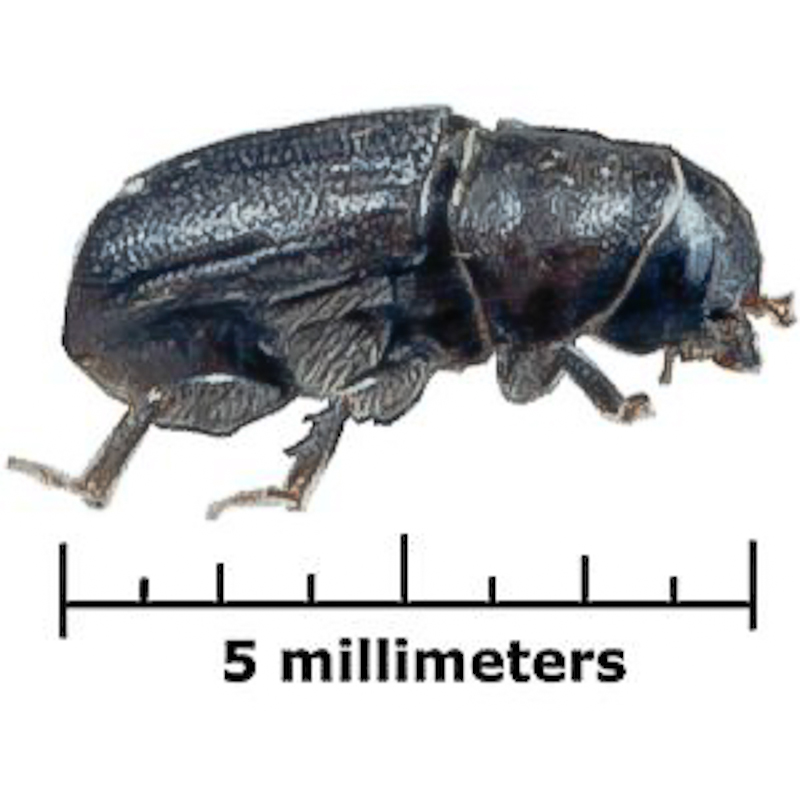A University of Alberta (U of A) research team is working to stop the pandemic of the destructive mountain pine beetle by turning its greatest weapon against it.
The beetle can kill trees within three to five days by emitting a series of airborne signals called pheromones to attract other beetles to mate with, and shut down the tree’s defences, according to Nadir Erbilgin, an assistant professor of forest entomology at the university.
According to Natural Resources Canada, the mountain pine beetle is native to southern British Columbia.
Its population began to rapidly expand in the early 1990s, killing about 50 per cent of commercial lodgepole pine trees in the province.
The pine beetle has since spread into Northern B.C. and Alberta as early as 2005, and has moved from lodgepole pine trees to Alberta’s native jack pine, according to Natural Resources Canada.
“The female pine beetle initiates the attack, and if the tree is acceptable to the beetle, she releases a pheromone. Usually a lot of males, and some females will respond to this pheromone, at which point the males will mate with the females,” Erbilgin said.
“The arriving males will release their own aggregation pheromone to attract more females. Once these beetles begin to tunnel, the tree begins to emit its own chemicals called 3-carene, which the beetles are highly attracted to,” he said. “We found that the female beetles produced a larger amount of pheromones on jack pine trees because of the higher concentration of 3-carene in comparison to lodgepole pines.”
Erbilgin said his team is working to create a synthetic pheromone from these existing chemicals to enhance the existing lure-based system in place today, in which the pheromones would be used to attract a number of beetles to a tree set to be harvested.
The tree would be burned and cut down, killing the insects.
“We needed to modify the existing lure-bait system used on Lodgepole Pine trees in British Columbia to the native jack pine species in Alberta,” Erbilgin said. “The two different ecosystems are radically different, and thus we needed a system more reliable and applicable to our own jack pine.”
Erbilgin said that out of a combination of factors, warmer winters due to climate change are the largest factor as to why these beetles began to spread out of control, as a result of higher survival rates among infant beetles.
He said the research team’s strategy may only be helpful if the outbreak is caught relatively early, and would have little effect when the beetle populations are too large.
“Although we cannot apply these techniques to British Columbian forests, it is not too late to contain their entry into the now vulnerable jack pine forests in Alberta,” Erbilgin said.






